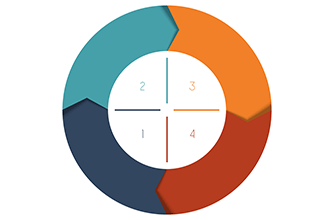The SaaS Splash
Over the years, Software as a Service (SaaS) has rapidly gained a significant market share in the enterprise software landscape.
A SaaS (Software as a service) business model is a delivery model that sells cloud-based applications and software via a monthly or annual subscription plan.
Since Salesforce pioneered the idea of distributing cloud-based software through the SaaS model in 2004, the cloud computing industry has skyrocketed to become a market worth $250 billion. But there are a few misconceptions around SaaS that muddle facts and create confusion. SaaS often plays nicer than traditionally-distributed software, but are companies really benefitting from this?
Is SaaS Truly Disruptive?
The SaaS model of distributing applications has been in place since the 1990s, when businesses subscribed for services from application service providers (ASPs) to use certain software. As demand for such services grew, SaaS providers evolved as the new face of ASPs.
But unlike common misconceptions, SaaS isn’t synonymous to the cloud. It’s also not a magic wand that’s disrupting the future of software. For example, look at enterprise spending on SaaS since 2013, which saw a spike of 17.6%. But that doesn’t mean enterprise are jettisoning traditional on-prem solutions; in fact they’ve only decreased their spending on these products by 2.8%. It’s bit of a stretch to call SaaS disruptive.
SaaS is simply a service delivery model that makes buying software easy and cheap for businesses of all sizes. Most businesses don’t care much about the delivery model as much as they care about cost and value.
SaaS is disrupting the enterprise software market, but only in the context of cloud computing technology.
SaaS is not a blip, but a definitive market force that’s changing the way businesses operate. It has liberated the market to everyone in need of a certain type of software without forcing them to burn their fingers.
What About Its Impact on BPM?
Perhaps the biggest ripple that SaaS has created is in the realm of business process management . BPM software, especially ones hosted in cloud, delivers optimum outcomes for businesses when it’s distributed as a SaaS product.
In addition to the ease of data storage and accessibility on the cloud, this new kind of BPM SaaS tool is easy to subscribe to, affordable for long-term use, and within means for businesses to scale up with growing requirements. So the value proposition that SaaS BPM offers to businesses – regardless of if they’re a two-member startup or a 5000-strong enterprise – boils down to the cost effectiveness of the software.
Here are a few things that the framework of business process SaaS has disrupted in recent years:
1. Lower administration costs
The cost of using and maintaining a SaaS BPM software in the long run is nominal. It comes with lower initial cost and requires little learning curve.
2. Automated data recoverability
Disaster recovery is easy for SaaS BPM vendors because most of them host data on the cloud. Data maintenance is entirely a liability on the BPM SaaS vendor.
3. Ease of ramping up new processes
You can buy a SaaS BPM product for as many processes as you need because most tend to be modestly priced. You can also unsubscribe if you don’t want it anymore.
4. Virtual collaboration
Business process SaaS products built on cloud offer you remote and real-time collaboration capabilities.
5. Liberates the IT
SaaS BPM tools don’t require specialized skills like coding. Therefore, you have more control on the IT budget while the department can focus on more intelligent tasks.
6. Hardware free
Your business doesn’t need to buy a bulk of hardware (and software) to kickstart a BPM initiative. Your SaaS BPM is responsible to facilitate those requirements.
So What’s the Next Disruption?
Perhaps something better than SaaS. Businesses are already starting to think if SaaS business process management is ripe for disruption and if we’re ready to move to a different style of doing business.
We don’t know what that could be, but here are a few ideas that thought leaders are throwing around:
– Desktop apps sold on annual subscription can make a comeback in the future. After all, we already have a lot of desktop software masquerading as SaaS.
– The market might want to migrate to an open source distribution model, or a hybrid of open source and SaaS. This model can be cheaper (or even free!), more open to integration, rapid in development cycle, and free from vendor lock-ins or price controls.
– The third web (Web 3.0) distributed via SaaS will massively enhance customer relationship management in a way we haven’t seen yet.
– A consolidated model where a variety of SaaS tools are integrated together, which will allow customers choose all or some SaaS products at will.
The Upshot
SaaS business process management is at its peak right now; take utmost advantage of the SaaS watering hole that everyone is flocking to while it lasts. A cloud-based BPM SaaS product enables citizen developers to take full control of their business processes. BPM SaaS speeds up the time to market, lets everyone be their own developer, cuts down cost, and reduces developmental risks. With business automation software, companies can unify fragmented processes, eliminate redundancies, and ensure consistent execution across departments. This creates a foundation for scalable operations and better decision-making at every level.
But SaaS isn’t just an evanescent actor that’s just paving way for a better and more powerful business model; its effects will be felt for a very long time. However, SaaS can’t be the solution for all business delivery problems. Always keep your eyes open for new and more innovative ways to run your business!













